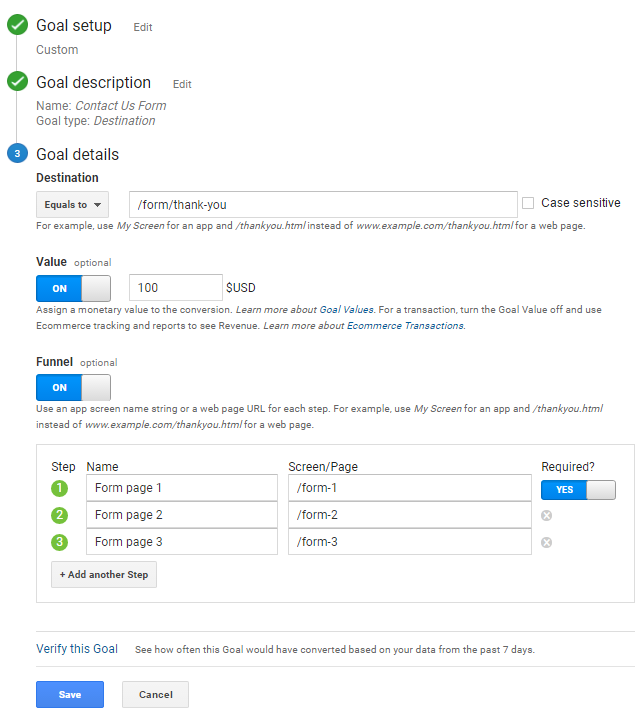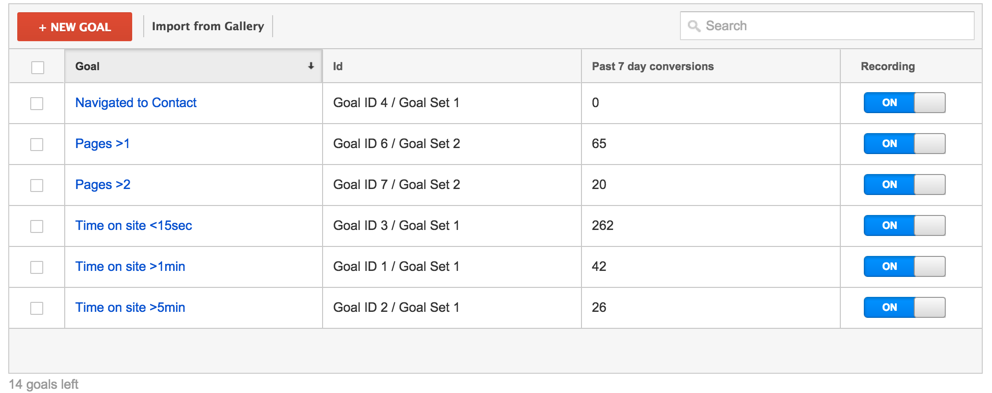What Data Is Google Analytics Goals Unable to Track and Why
What Data Is Google Analytics Goals Unable to Track and Why
Blog Article
Introducing the Blind Spots: Understanding What Google Analytics Goals Can not Determine
In the realm of electronic analytics, Google Analytics stands as an effective tool for monitoring and evaluating online customer communications. In the middle of its robust capabilities, there exist blind places that typically escape dimension. what data is google analytics goals unable to track. Recognizing what Google Analytics goals can not determine is vital for obtaining a comprehensive view of customer actions and interaction. As we explore the complexities of these blind spots, we discover a complex web of uncharted territories that hold important understandings into individual actions and motivations, challenging traditional knowledge and losing light on the restrictions of our data-driven understanding.
Customer Behavior on External Platforms
Understanding exactly how customers connect on exterior systems is vital for optimizing online approaches. External platforms, such as social networks networks, recommendation internet sites, and on the internet forums, play a significant role in driving website traffic to a firm's web site. By evaluating customer actions on these platforms, organizations can get valuable insights right into the effectiveness of their marketing initiatives and the choices of their target market.
One key facet of customer behavior on outside platforms is the referral source. By tracking where the individuals are coming from, organizations can identify which platforms are driving the most traffic to their web site. This information can assist business allocate their sources more efficiently, concentrating on the systems that produce the very best outcomes.

Offline Conversions and Interactions
Evaluating customer habits on external systems supplies beneficial insights into online approaches; nonetheless, taking into consideration offline conversions and communications is just as essential for a thorough understanding of a business's general performance. Offline conversions, such as in-store acquisitions or phone inquiries, play a significant role in lots of companies' success.

Acknowledgment Beyond Last Click
When delving right into the realm of digital marketing analytics, it becomes necessary to look beyond the solitary touchpoint of the last click for an extra detailed understanding of attribution. While Google Analytics provides useful go understandings right into individual habits, counting exclusively on last-click acknowledgment can be limiting - what data is google analytics goals unable to track. Attribution models that go past the last click supply an extra nuanced view of the consumer trip, thinking about all the touchpoints that bring about a conversion
Acknowledgment past the last click permits online marketers to appoint credit scores to numerous communications along the conversion path, providing a more clear image of the effectiveness of various advertising networks. By discovering multi-touch attribution designs such as direct, time decay, or position-based attribution, organizations can better allocate their marketing spending plans and optimize their approaches for optimal impact.
Recognizing the influence of more info here each touchpoint in the conversion procedure is important for making notified choices and making the most of ROI. By embracing attribution beyond the last click, services can get deeper understandings right into customer habits and customize their marketing initiatives better.
Cross-Device and Cross-Browser Monitoring

Likewise, cross-browser monitoring complements cross-device monitoring by recording individual habits as they change between different web internet browsers. Understanding just how individuals interact helpful site with websites on different browsers can help marketers optimize their on-line experiences to guarantee uniformity and functionality throughout various platforms.
Qualitative Information and Individual Intent
Comprehending customer intent through qualitative information evaluation is critical for establishing targeted digital advertising and marketing strategies that resonate with the requirements and choices of the target audience. Qualitative data provides insights into the 'why' behind individual actions, losing light on motivations, feelings, and preferences that measurable information alone can not catch. By examining individual feedback, remarks, and interactions, marketing experts can reveal useful info about customer intent, allowing them to tailor their messaging, material, and offerings to much better straighten with what their target market is looking for.
Qualitative information likewise assists in understanding the context in which users involve with a site or application. This contextual understanding enables marketers to create more tailored and relevant experiences, eventually driving greater interaction and conversion rates. By delving right into customer intent through qualitative information evaluation, organizations can get a much deeper understanding of their target market, causing extra reliable marketing approaches that fulfill users' assumptions and needs.
Conclusion
In verdict, Google Analytics goals have constraints in gauging individual actions on external platforms, offline conversions, acknowledgment past last click, cross-device and cross-browser tracking, and qualitative information connected to individual intent. what data is google analytics goals unable to track. It is essential for organizations to be mindful of these blind areas in order to supplement their information evaluation with various other tools and methods to acquire a more detailed understanding of their audience and enhance their general electronic advertising and marketing techniques
By evaluating individual actions on these platforms, companies can gain useful insights right into the efficiency of their advertising and marketing initiatives and the preferences of their target audience.
Analyzing user actions on external platforms provides valuable understandings into on-line strategies; nonetheless, taking into consideration offline conversions and communications is similarly essential for a comprehensive understanding of a business's overall efficiency.In electronic advertising and marketing analytics, moving beyond last-click acknowledgment to explore cross-device and cross-browser monitoring is crucial for getting a holistic understanding of customer communications across different systems and tools. By examining customer responses, remarks, and interactions, marketers can reveal valuable details about user intent, permitting them to customize their messaging, material, and offerings to much better line up with what their audience is seeking.
By diving into user intent through qualitative information evaluation, organizations can acquire a much deeper understanding of their target audience, leading to much more efficient marketing approaches that meet customers' needs and expectations.
Report this page